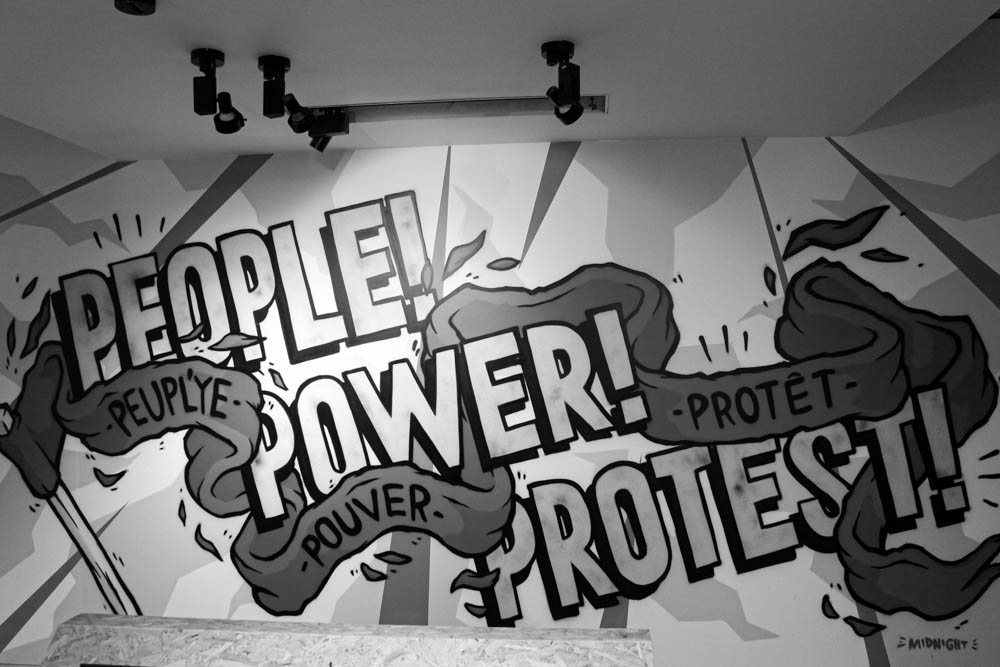The People! Power! Protest! is an exhibition at the Jersey museum that explores how the right to protest has shaped and influenced the island that we know today. It includes events from the Corn Riots in 1769 up to the Black Lives Matter movement in 2020.

People during this time mainly grew corn and wheat, usually making bread and using it as currency. In 1969 there was a lack of corn and its export was banned due to the poor harvest. This meant that the food prices went up and the only people that could afford it were the rich, which left the poorer people to starve.
People were frustrated with the food shortages, rising prices, the unfair taxation system and Jersey’s power structure, so around 500 hundred islanders stormed the Royal Court with 13 demands to alleviate their struggles on September 28th 1769. Demands:
• That grain and wheat were too expensive and that the price of wheat is lowered and set at 20 sols per cabot.
• That foreigners to be ejected from the Island./
• That his Majesty’s tithes be reduced to 20 sols per vergée.
• That the value of the liard coin be set to 4 per sol.
• That there should be a limit on the sales tax.
• That seigneurs stop enjoying the practice of champart, (the right to every twelfth sheaf of corn or bundle of flax).
• That seigneurs stop the right of ‘Jouir des Successions’, (the right to enjoy anyone’s estate for a year and a day after they died without heirs).
• That branchage fines could no longer be imposed.
• That Rectors could no longer charge tithes except on apples.
• The lowering of a money rente due by tenants on a fief.
• That Philippe Larbalestier, who had been sent to prison on 23 September, be released without having to pay a fine.
• That the charges against Captain Nicholas Fiott be dropped and that he be allowed to return to the Island without an inquiry.
• That the Customs’ House officers be ejected.
No one lost their life although many came armed with sticks and clubs, and an usher was thrown over the court railing during the disturbance.
Overall, the riot was successful and led to the Code of 1771 which meant that the Royal Court was stripped of its legislative powers, meaning that from 1771, only the States Assembly could create laws.

Context-Black Lives Matter
Black Lives Matter is a decentralized political and social movement protesting against incidents of police brutality and all racially motivated violence against black people.
On the 25th of May 2020, George Floyd (46-year-old African-American male) was killed by Derek Chauvin (white police officer) after being pinned down by the officer’s knee. Bystanders filmed the event and you could hear Floyd repeatedly say “I can’t breathe” and the police officer starting to put more pressure until Floyd passed away.
This inspired a lot of people to protest and speak up about human rights and police brutality. There were over 150 protests across 21 states of America. Some were meant to be peaceful however, the military and police got involved by being violent and harming people using tear gas and firing rubber bullets into crowds.

This inspired the citizens of jersey to speak up and protest. A large number of people gathered together and kneeled down at People’s Park in memory of George Floyd.


